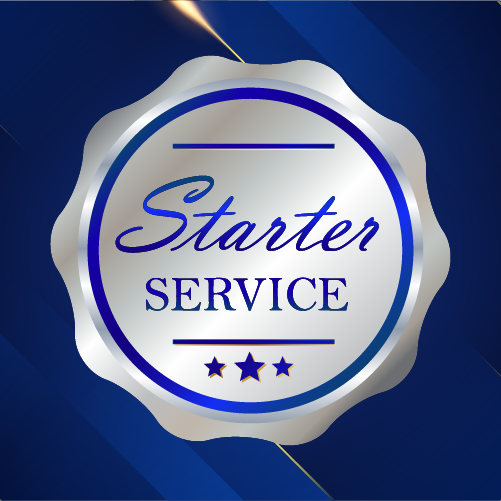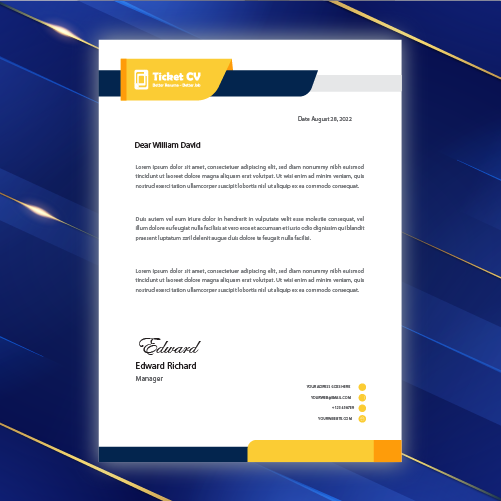Setting long-term career goals is crucial for professional growth. By establishing a clear vision for the future, individuals can shape their professional journey and work towards achieving their aspirations. Strategic planning is pivotal in determining career success providing a roadmap for progress and development. 5-year career goals guide an individual’s approach to opportunities and impact their overall professional experience. Whether aiming for a promotion, starting a new venture, or seeking connections in a specific area, having well-defined career objectives can significantly influence one’s life.
Examples of 5-year career goals illustrate how strategic planning can help individuals align their aspirations with the company’s objectives. These examples offer insight into the impact of long-term career goals on personal growth and success within the workplace. As individuals navigate their professional journey, these examples serve as valuable reference points to help them understand how setting ambitious yet achievable goals can propel them towards more significant accomplishments.
Contents
ToggleDefining Career Goals
Importance of Long-term Planning
Long-term planning in one’s career is crucial for sustained success. Thinking ahead allows individuals to set a clear path toward their 5-year career goals, fostering a sense of purpose and direction in their professional journey.
Planning for the long term offers numerous benefits. It enables individuals to anticipate industry trends, skill requirements, and potential opportunities, thus preparing them to adapt and thrive in a dynamic work environment. Moreover, it fosters resilience by helping professionals navigate challenges and setbacks with a strategic mindset.
Long-term planning is essential for professional growth as it provides a roadmap for achieving significant milestones and progressing steadily toward one’s ultimate career objectives. By envisioning where they want to be in five years, individuals can make informed decisions about skill development, education, and job transitions that align with their long-term aspirations.
Establishing SMART Career Goals
Understanding SMART (Specific, Measurable, Achievable, Relevant, Time-Bound) goals is fundamental to defining practical 5-year career objectives. Specific goals clarify what needs to be accomplished within the specified time frame, while measurable goals enable individuals to track their progress objectively.
Setting realistic career goals ensures that they are attainable within the given timeframe. It prevents individuals from feeling overwhelmed or demotivated by setting unattainable targets. Time-bound goals create a sense of urgency and accountability, prompting individuals to take consistent action toward their long-term aspirations.
SMART is an acronym that you can use to guide your goal setting. To make sure your goals are clear and reachable, each one should be:
- Specific (simple, sensible, significant).
- Measurable (meaningful, motivating).
- Achievable (agreed, attainable).
- Relevant (reasonable, realistic and resourced, results-based).
- Time bound (time-based, time limited, time/cost limited, timely, time-sensitive).
By adhering to the SMART criteria when establishing career goals, professionals can enhance their focus and productivity while minimizing distractions or efforts on irrelevant pursuits. For instance, instead of setting a vague goal like “improve leadership skills“, a specific and measurable objective would be “complete an executive leadership course within the next two years.

Professional Development Strategies
Advancing Education and Skills
Continuous learning is crucial for career advancement as industries evolve rapidly. By pursuing educational opportunities and developing new skills, individuals can position themselves for long-term success. Obtaining a professional certificate or enrolling in relevant courses demonstrates a commitment to growth and adaptability.
Gaining Industry Recognition Strategies for gaining recognition within one’s industry is vital for long-term career aspirations. Building a solid reputation within the professional community through thought leadership, speaking engagements, or publishing insightful content can significantly impact future career prospects. Industry recognition not only enhances credibility but also opens doors to new opportunities.
Professional Network Diversification. Diversifying one’s professional network is essential for holistic career development. By connecting with individuals from diverse backgrounds and industries, professionals can access unique perspectives and potential opportunities that align with their 5-year career goals. Leveraging a varied network enables individuals to tap into different resources and expertise.
Developing Leadership Skills
Advancing in Leadership Roles
Strategies for advancing into leadership positions within five years include seeking out projects that allow one to demonstrate their leadership potential. This could involve leading a team on a specific project or mentoring newer employees, showcasing the ability to guide and inspire others.
Developing leadership skills for long-term career progression is essential for achieving 5-year goals. Pursuing leadership training programs, seeking mentorship from established thought leaders, and actively participating in decision-making can significantly improve these skills.
The impact of leadership roles on achieving career objectives is profound. Assuming leadership responsibilities enhances one’s professional reputation and opens doors to opportunities that align with long-term career aspirations. By demonstrating effective leadership, individuals can be valuable assets within their organizations and the industry.
Becoming a Mentor in Your Field
Transitioning into a mentorship role within five years requires individuals to actively seek opportunities to share their expertise with junior colleagues while providing guidance and support. Engaging in activities such as conducting workshops, offering advice on complex projects, and providing ongoing support can help establish one as a trusted mentor within the organization.
Sharing expertise and guiding others in your field is an impactful way of contributing to the growth of both individuals and the organization. By imparting knowledge, individuals solidify their understanding of key concepts and cultivate a network of professionals who value their insights and experience.
The significance of mentorship in achieving long-term career goals cannot be overstated. Being a mentor allows individuals to leave a lasting legacy by positively influencing the careers of others. Furthermore, it provides an avenue for personal growth by fostering new perspectives through interactions with mentees.
Incorporating essential skills such as effective communication, strategic thinking, and emotional intelligence into daily work practices is pivotal for aspiring leaders aiming to achieve 5-year career goals.
Enhancing Communication Abilities
Building Personal Brand for Career Growth
Cultivating a Strong Personal Brand for Long-term Success
Building a solid personal brand is crucial for achieving long-term career goals. It involves creating a distinct identity and reputation that sets one apart professionally. This can be achieved through consistent verbal and written communication that reflects one’s expertise and values.
Leveraging Branding Strategies to Support 5-Year Career Goals
In the context of 5-year career goals, leveraging branding strategies can significantly contribute to career growth. This includes developing practical communication skills, mastering public speaking, honing language proficiency, and strategically utilizing social media platforms.
Communication Skills:
Enhancing communication abilities is fundamental to building a robust personal brand. Effective communication encompasses active listening, clear articulation of ideas, and adapting communication style based on the audience or situation. Individuals can establish themselves as credible and influential professionals by continually refining these skills.
Public Speaking:
Mastering the art of public speaking plays a pivotal role in shaping one’s brand. Whether delivering presentations at industry events or leading organizational meetings, being an adept public speaker fosters confidence and authority. This skill enhances visibility and reinforces expertise in a particular field.
Fluent in foreign languages:
Fluent in foreign languages contributes significantly to personal branding, especially in diverse global environments. Multilingual professionals often have an edge in international business settings due to their ability to connect with a broader range of stakeholders. Moreover, fluency in multiple languages showcases adaptability and cultural awareness – highly valued in today’s interconnected world.
Social Media:
Utilizing social media effectively is integral to modern personal branding efforts. Professionals can strategically leverage platforms like LinkedIn for networking, sharing insights within industry groups, and showcasing their expertise through thought leadership content. By maintaining a consistent online presence aligned with their professional goals, individuals can amplify their influence and expand their network over time.

Transitioning to a New Career Path – Setting Manageable Steps for Goals
When considering a career change, it’s essential to establish manageable steps for achieving long-term goals. This involves breaking down the transition into smaller, achievable milestones.
- Self-Assessment: Begin by assessing current skills, interests, and values to identify potential career paths that align with personal aspirations. Understanding oneself is crucial in determining the desired direction for the new career.
- Research Career Paths: Explore various career paths and their requirements within the job market—research potential employers and industries to gain insight into the skills and qualifications needed for the new role.
- Networking and Mentorship: Engage with professionals in the desired career path to gain valuable insights and advice. Building a network within the new industry can provide opportunities for mentorship, guidance, and potential job leads.
- Skill Development: Identify skill gaps between the current role and the targeted career path. Acquire new skills or enhance existing ones through courses, workshops, or certifications to become more competitive in the new field.
- Seeking Opportunities at Current Employer: If feasible, explore potential opportunities within the current employer that align with the desired career path. Internal mobility programs or lateral moves may present avenues for a gradual transition.
- Setting Clear Milestones: Establish specific milestones such as securing relevant certifications, attending networking events, or applying to particular positions monthly. These milestones provide tangible targets to work towards during the transition process.
- Resume Tailoring: Tailor resumes and cover letters to highlight transferable skills relevant to the new career path. Emphasize accomplishments that demonstrate suitability for roles in the chosen field.
- Interview Preparation: Prepare thoroughly for interviews by researching common interview questions in the new industry and practicing responses that showcase how past experiences apply to future roles.
By setting manageable steps such as self-assessment, research of potential career paths, networking efforts, skill development initiatives, internal opportunity exploration, milestone establishment, resume tailoring, and interview preparation, individuals can smoothly navigate a successful transition into a new career path.
Achieving Career Stability and Growth
Collaborating on Career Goals
Collaborating with colleagues or mentors to set career goals can provide valuable insights and support. By openly discussing aspirations, individuals can gain diverse perspectives and learn from others’ experiences. This collaboration fosters community and shared purpose, enhancing motivation and accountability.
Seeking advice from seasoned professionals who have successfully navigated the career ladder can offer practical guidance. Understanding how others achieved stability in their careers provides inspiration and a roadmap for personal growth. Moreover, receiving constructive feedback on one’s 5-year career goals helps refine them for attainability.
Pursuing Entrepreneurship Opportunities
Exploring entrepreneurship opportunities opens avenues for professional development beyond traditional roles. Venturing into entrepreneurship allows individuals to take charge of their career stability by creating opportunities. It enables them to set their salary benchmarks based on the value they bring to the market.
Embarking on entrepreneurial endeavors demands resilience, innovation, and strategic planning. Individuals pursuing this path must cultivate a growth mindset, embracing challenges as learning opportunities. Moreover, leveraging networking platforms and mentorship programs can provide invaluable support for navigating the complexities of entrepreneurship.
By collaborating with peers to set ambitious yet achievable career goals, individuals gain diverse perspectives that enrich their journey toward career stability and growth. Simultaneously, exploring entrepreneurship opportunities empowers individuals to carve unique paths aligned with their long-term objectives while fostering adaptability in an evolving professional landscape.
Improving Time Management
Time Management Skills
Improving time management is crucial for achieving 5-year career goals. Developing practical time management skills enables individuals to allocate their time efficiently, leading to increased productivity and better work-life balance.
Productivity Enhancement
Enhancing time management directly impacts productivity. By effectively managing one’s time, individuals can accomplish more tasks within a given timeframe, thereby boosting their overall productivity.
Efficient Use of Time
Learning to manage time efficiently allows individuals to make the most out of each day. This involves setting priorities, creating schedules, and avoiding procrastination, ultimately leading to improved available time use.
Prioritizing Tasks
A key aspect of improving time management is the ability to prioritize tasks. By identifying and focusing on high-priority assignments first, individuals can ensure that they are allocating their time effectively towards tasks that contribute significantly to their 5-year career goals.
Avoiding Time Wastage
Effective time management involves recognizing and eliminating activities that consume unnecessary time. This includes reducing distractions, delegating tasks when possible, and utilizing tools or techniques to streamline processes.
Developing strong time management skills empowers individuals to allocate adequate focus on essential responsibilities while maintaining a healthy work-life balance. It enables them to achieve more in less time by prioritizing tasks effectively and avoiding common pitfalls that lead to wasted hours.

Setting Effective Career Goals
Tracking Progress Towards Goals
Setting 5-year career goals is crucial, but tracking progress toward these goals is equally important. Monitoring progress allows individuals to stay focused and motivated, ensuring they are on the right track to achieve their long-term aspirations.
Regular Self-Assessment
Regular self-assessment is essential for tracking progress toward 5-year career goals. This involves reflecting on achievements, identifying areas for improvement, and adjusting strategies accordingly. For instance, an individual aiming for a management position can assess their leadership skills periodically and take relevant training or courses if needed.
Utilizing Key Performance Indicators (KPIs)
Utilizing key performance indicators (KPIs) provides quantifiable measures of progress towards career goals. For example, if someone’s goal is to increase sales by 50% within five years, they can track monthly or yearly sales figures as KPIs to ensure they are moving in the right direction.
Seeking Feedback
Seeking feedback from mentors, supervisors, or colleagues can provide valuable insights into one’s progress. Constructive feedback helps individuals understand their strengths and weaknesses while gaining perspectives that may not have been apparent otherwise.
Adjusting Milestones
Adjusting milestones based on evolving circumstances is imperative. External factors such as industry changes or economic shifts may necessitate recalibrating initial plans to ensure continued progression toward long-term career objectives.
By implementing these strategies for tracking progress toward 5-year career goals, individuals can maintain focus and drive while making necessary adjustments along the way.
Achieving Work-life Balance
Importance of Work-life Balance
Work-life balance is essential for maintaining overall well-being. It involves effectively juggling work and personal life demands, ensuring that neither overshadows the other.
Prioritizing Health and Wellness
Prioritizing health and wellness is crucial in achieving work-life balance. By incorporating regular exercise, a balanced diet, and sufficient rest into their daily routine, individuals can enhance their overall well-being, positively impacting their professional performance.
Flexible Work Arrangements
Employers play a pivotal role in fostering work-life balance by offering flexible work arrangements. This may include telecommuting options, compressed workweeks, or flexible scheduling to accommodate personal commitments without compromising productivity.
Managing Daily Work Hours
Effectively managing daily work hours is fundamental to achieving work-life balance. Setting boundaries and prioritizing tasks can help individuals accomplish their professional responsibilities within a reasonable timeframe, allowing them to dedicate ample time to personal pursuits outside of work.
Creating Boundaries Between Work and Personal Life
Establishing clear boundaries between work and personal life is vital. This entails unplugging from work-related communication outside designated hours to fully engage in leisure activities or spend quality time with family and friends.
Impact on Job Satisfaction
A healthy work-life balance significantly contributes to job satisfaction. When individuals feel empowered to prioritize personal well-being alongside professional responsibilities, they are more likely to experience higher job satisfaction and overall happiness in their careers.
Strategies for Employers
Employers can implement strategies such as promoting open communication, providing mental health resources, and encouraging employees to take regular daily breaks. These initiatives foster a supportive environment conducive to achieving work-life balance.
By integrating these strategies into their organizational culture, employers demonstrate a commitment to prioritizing the well-being of their workforce while simultaneously nurturing a positive workplace environment.
Preparing for the Future
Creating a Retirement Plan for the Future
Setting 5-year career goals involves more than just professional aspirations; it also calls for planning one’s financial future, including retirement. To achieve this, individuals must assess their current position, consider their expected career growth over the next five years, and then create a retirement plan that aligns with their long-term goals.
Planning for retirement should start early in one’s career to ensure a secure financial future. By setting specific 5-year career goals, individuals can estimate their potential income growth and make informed decisions about retirement savings. For instance, if someone expects to move into a higher-paying role within five years, they may adjust their retirement savings accordingly.
Creating a retirement plan also involves considering healthcare needs during retirement. As individuals age and progress in their careers, they should factor in potential healthcare costs and make provisions for medical care during retirement. For example, understanding how Medicare works and what it covers can help plan healthcare expenses post-retirement.
Moreover, when setting 5-year career goals, evaluating the possibility of taking on caregiving responsibilities within that timeframe is essential. Planning for potential caregiving duties due to aging parents or other family members can impact an individual’s financial situation and work-life balance. Therefore, considering these possibilities while creating a retirement plan is crucial.
Furthermore, as individuals progress through their careers and set 5-year career goals, they should reassess their retirement plan periodically. With each milestone reached or change in circumstances such as pay raises, or promotions, adjustments to the retirement savings strategy may be necessary to stay aligned with evolving career trajectories.
Conclusion
In today’s competitive professional landscape, setting and achieving career goals is paramount to success. By defining clear objectives, pursuing professional development, honing leadership and communication skills, and embracing change, individuals can pave the way for a fulfilling and prosperous career. Effective time management, work-life balance, and preparation for the future are also crucial elements in this journey. As one navigates through these strategies, one must remember that adaptability and resilience are critical traits for sustained growth.
As you embark on your career goal-setting journey, remember that continuous learning and flexibility are invaluable assets. Embrace challenges as opportunities for growth, and stay proactive in refining your skills. With dedication and strategic planning, you can steer your career toward the envisioned path of success.
Frequently Asked Questions
What are the key components of defining career goals?
Defining career goals involves identifying one’s passions, skills, and values and setting specific, measurable, achievable, relevant, and time-bound (SMART) objectives.
How can one enhance communication abilities to advance one’s career?
Improving communication abilities can be achieved through active listening, seeking feedback, honing presentation skills, and practicing clear and concise verbal and written communication.
What strategies can be employed to achieve work-life balance?
Work-life balance can be attained by setting boundaries between work and personal life, prioritizing tasks efficiently, delegating when necessary, and making time for self-care activities.
How does one effectively prepare for transitioning to a new career path?
Adequate preparation for transitioning to a new career involves conducting thorough research on the desired field, acquiring relevant skills or certifications, networking with professionals in the industry, and seeking mentorship or guidance.
Why is it important to set practical career goals?
Setting practical career goals provides direction and motivation while helping individuals focus on professional growth. It also assists in tracking progress and evaluating achievements.












